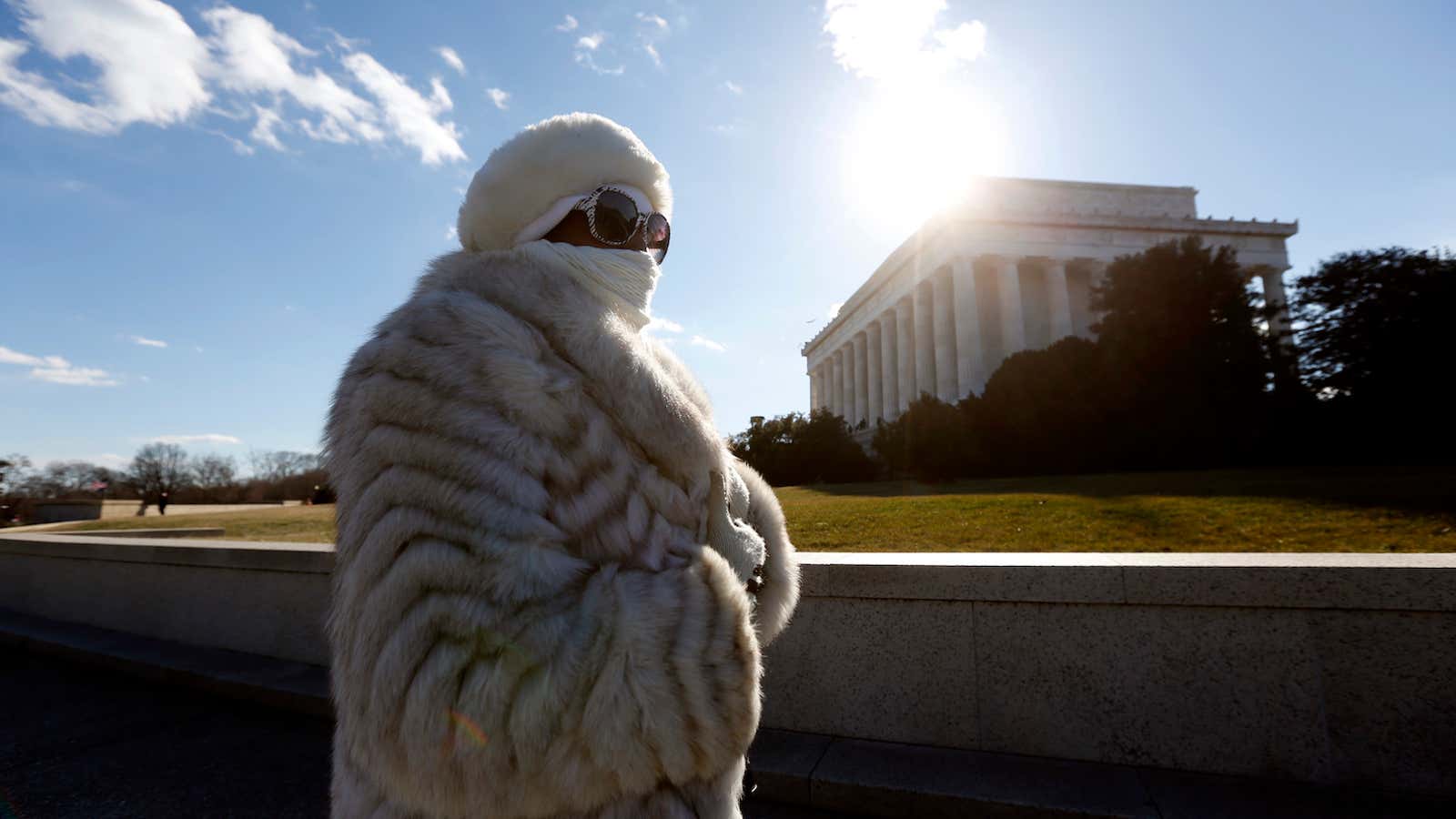The city of Los Angeles is only the most recent place to ban the use and sale of fur, following two e-commerce sites owned by YOOX Net-a-Porter (paywall) and designers like Burberry and Stella McCartney, which has been fur-free since its launch. And Gucci, probably the coolest brand in the world, says fur isn’t cool. “Do you think using furs today is still modern?” Gucci CEO Marco Bizzarri asked students at the London College of Fashion last year. “I don’t think so. And that’s why we’re not doing it.”
Fur in high fashion, where the clientele could afford it, is disappearing.
The alternative has been faux fur, which dates back to the 1860s, when attempts to mimic animal fur in children’s clothes were reported in Harper’s Bazaar. In the early 20th century, fake fur uses hair from South American alpacas. What we think of as fake fur today started in the 1940s and came from acrylic polymers. More recently, the fake fur you see on the trims of jackets at H&M, Zara, and other fast-fashion retailers comes from modacrylic polymers.
As alluded to by Bizzarri, do-gooder millennials are partly behind the trend away from real fur, but he thinks there’s the fake stuff has also gotten better. “Technology is now available that means you don’t need to use fur,” he elaborated. “The alternatives are luxurious. There is just no need.”
But the fake stuff has its problems, too. Modacrylics are petroleum-based products, so they pollute during production. Like other synthetic fibers, they also release microfibers when washed. A polyester-fleece jacket, for example, can release 1,000,000 fibers per wash, each of which are less than a millimeter in length and often find their way to the ocean. Imagine what a fake fur coat releases into the sea. And then, when you want to throw it away, it can’t be recycled. It will make its way to a landfill, where it won’t biodegrade. (Also, you probably shouldn’t get it wet.)
Compare the environmental footprint of that with real fur, and it might not be clear which is really better for the planet. “If we’re talking a kilogram of rabbit fur versus a kilogram of polyester…well, the rabbit fur might actually win,” Refinery 29 noted.
There are now attempts to create pelts from stem-cells in the lab—which is not dissimilar to the burgeoning fake-meat movement that is growing burgers in labs—and to make more ingredients for fake furs from plants, but there is still no solution.
Other than not wearing any fur at all.
